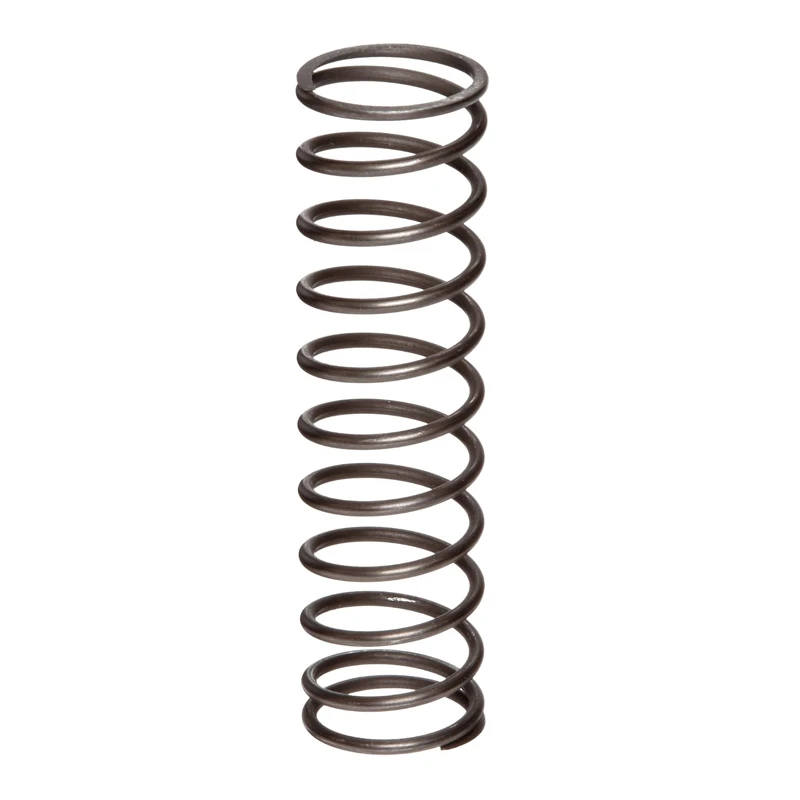
- Mobile Phone
- +8613931874955
- sales@cntcmetal.com
precision compression springs
Understanding Precision Compression Springs Applications, Manufacturing, and Importance
Precision compression springs are an essential component in various engineering and mechanical applications. These springs are designed to exert a force when compressed and play a crucial role in absorbing shock, maintaining tension, and enabling movement. With their extensive applications in industries ranging from automotive to electronics, understanding how they are manufactured and their significance can provide insight into their critical role in modern technology.
What are Precision Compression Springs?
Precision compression springs are mechanical devices made of coiled wire that is used to store energy and provide a force in response to compression. They are characterized by their ability to return to their original shape after being compressed, making them ideal for various applications where energy storage and release are required. The precision aspect refers to their tight tolerances and high-quality manufacturing standards, ensuring they perform consistently and reliably under predefined conditions.
Manufacturing Process
The manufacturing of precision compression springs involves various processes to ensure quality and precision. The primary materials used typically include high-carbon steel, stainless steel, or other alloys, depending on the application's requirements. The process includes several key steps
1. Material Selection Choosing the right material is vital as it affects the spring's performance, including tensile strength, corrosion resistance, and fatigue life.
2. Wire Forming The process begins with wire being fed into a coiling machine, which shapes the wire into helix forms. The diameter of the wire and the spacing between coils are crucial for the spring's characteristics.
3. Heat Treatment After coiling, springs often undergo heat treatment to relieve internal stresses and enhance the material’s mechanical properties. This step is essential for increasing durability and ensuring longevity.
4. Finishing Processes Springs may be subjected to additional processes, such as shot peening, to improve fatigue resistance or surface treatment for corrosion protection. Finally, they are inspected for size, consistency, and quality.
5. Testing Precision compression springs undergo rigorous testing to ensure they meet specific force and deflection requirements. Tests may include load testing, fatigue testing, and dimensional inspections.
precision compression springs

Applications of Precision Compression Springs
Precision compression springs are ubiquitous in many sectors
. Key applications include- Automotive Industry Compression springs are commonly used in car suspensions, brake systems, and various internal mechanisms. Their ability to absorb shocks and maintain tension is crucial for vehicle performance and safety.
- Electronics In electronic devices, these springs are often found in switches, connectors, and battery contacts, providing reliable operation and connection.
- Medical Devices In the medical field, compression springs are used in devices like syringes, diagnostic equipment, and prosthetics, where precision and reliability are paramount.
- Aerospace The aerospace industry uses precision compression springs in landing gear systems, control surfaces, and various mechanisms, where high performance and safety are critical.
- Consumer Goods From pens to household appliances, compression springs play a significant role in ensuring the functionality of everyday products.
Importance of Precision in Compression Springs
The precision in the manufacturing of compression springs is vital for their performance in applications. Variations in dimensions can lead to failures or suboptimal operation, which can have severe consequences, especially in critical fields like automotive and aerospace. Precision springs ensure that devices operate as intended, enhancing efficiency, safety, and reliability.
Conclusion
In conclusion, precision compression springs are crucial components in countless applications across various industries. Their ability to store and release energy with remarkable reliability makes them indispensable. The detailed manufacturing processes ensure that these springs meet the high standards required for modern engineering challenges. As technology advances, the demand for precision components like compression springs will continue to grow, driving innovations and improvements in design and manufacturing techniques. Understanding their value not only highlights their importance in mechanical systems but also underscores the significance of precision engineering in today's high-tech world.
share:
-
Your Source for Concrete Wall Ties and Masonry AccessoriesNewsJul.10,2025
-
Unlocking the Power of Iron Wire for Every ProjectNewsJul.10,2025
-
Explore Advanced Chain Wire and Stainless Steel Mesh FencingNewsJul.10,2025
-
Discover the Benefits of Annealed Wire ProductsNewsJul.10,2025
-
Discover China Stainless Steel Wire Mesh SolutionsNewsJul.10,2025
-
Build with Confidence Using High-Performance Masonry AccessoriesNewsJul.10,2025
-
Why Sacrificial Formwork Is Redefining Underground ConstructionNewsJun.06,2025



















